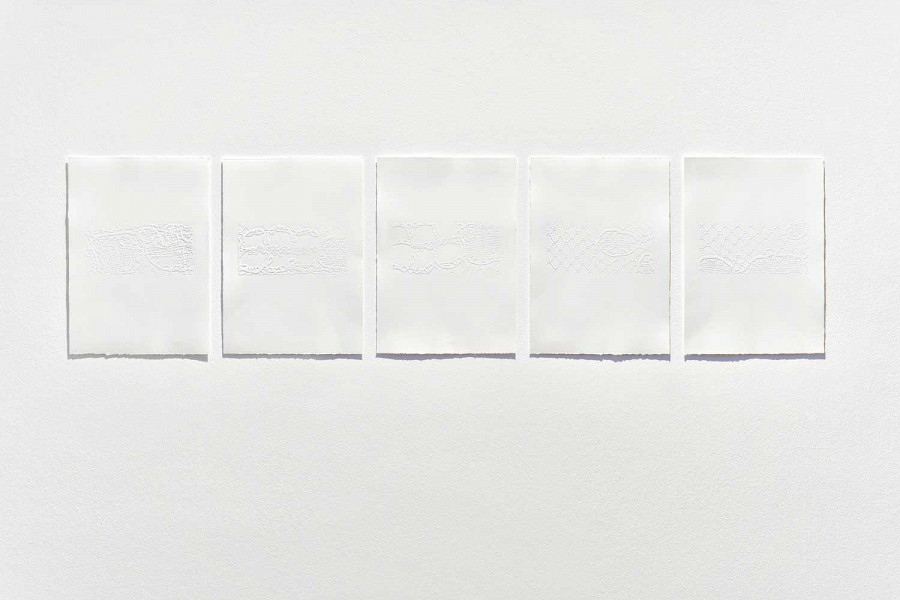
Homage to Anna Kristine Iwersen (2020)
Is it possible to tell the biography of a historical figure behind museum objects unknown today in the form of fragments to find or discover a representation of them and their entrepreneurial work?
Around the years 1836/37, a few years before the start of the women's movement, there were (almost) no opportunities for women to take on a leadership role in society. The lace dealer Anna Kristine Iwersen from Lögumkloster in Vestslesvig managed to become a successful entrepreneur and to defy the role of women in the early 19th century. Her work as a businesswoman became the subject of this work.
Anna Kristine Iwersen was a successful lace dealer. Her purchase accounts were used as the historical source for this work. They provide us with information about the lace-makers Anna Kristine Iwersen bought her lace goods from. It gives the lace-makers, the craftsmen behind the lace goods, an identity and origins.
Anna Kristine Iwersen designed and developed the goods in her patterns, she looked for suitable lace-makers and taught them to make her patterns. She gave the lace-makers their orders and let them do the work. She bought the goods back from them. She examined and sorted them according to quality. Up to then, only women had been involved in this process. She sold the work of the lace-makers to the lace merchant. The work entered the market and finally arrived at the customer. If the maintained and preserved works are archived in a museum, they are usually assigned to the “empty” and completely unknown name Anna Kristine Iwersen by a note on an index card in the museum file. In this respect, the knowledge of the identity and origin of the lace-makers behind the goods attributed to Anna Kristene Iwersen also locates Anna Kristine Iwersen herself as a business woman in a network of trade structures, the pattern of which she herself determined. It also gives her an identity. This interests me.
The works Homage to Anna Kristine Iwersen represent as a series the development of this trade network, during her work- and lifetime. The base (the stitch pattern) corresponds to the typical basis of Tondern lace, using the technique from which Iwersen's goods were made. The shapes (thread compression) form the pattern on the tulle base and correspond to the places of origin and thus the places of work of the individual lacemakers, which are recorded in her purchase accounts and church books.
Each lace (bobbin) pattern represents a map of Anna Kristine Iwersen's trade network at a very specific point in time, which was designed by her own work. She designed this pattern solely through her life's work as a trader, just as she designed the patterns of the lace-makers in the role of trader. By transferring the trade network into the pattern of my work, I make it visible.
Since Anna Kristine Iwersen worked at a time when the Vestslesvigen lace industry was changing, the development of her trade network shows at the same time the decline in the lace trade in this area, for which her work was exemplary.
Homage to Anna Kristine Iwersen is dedicated to Ms. Anna Kristine Iwersen.








